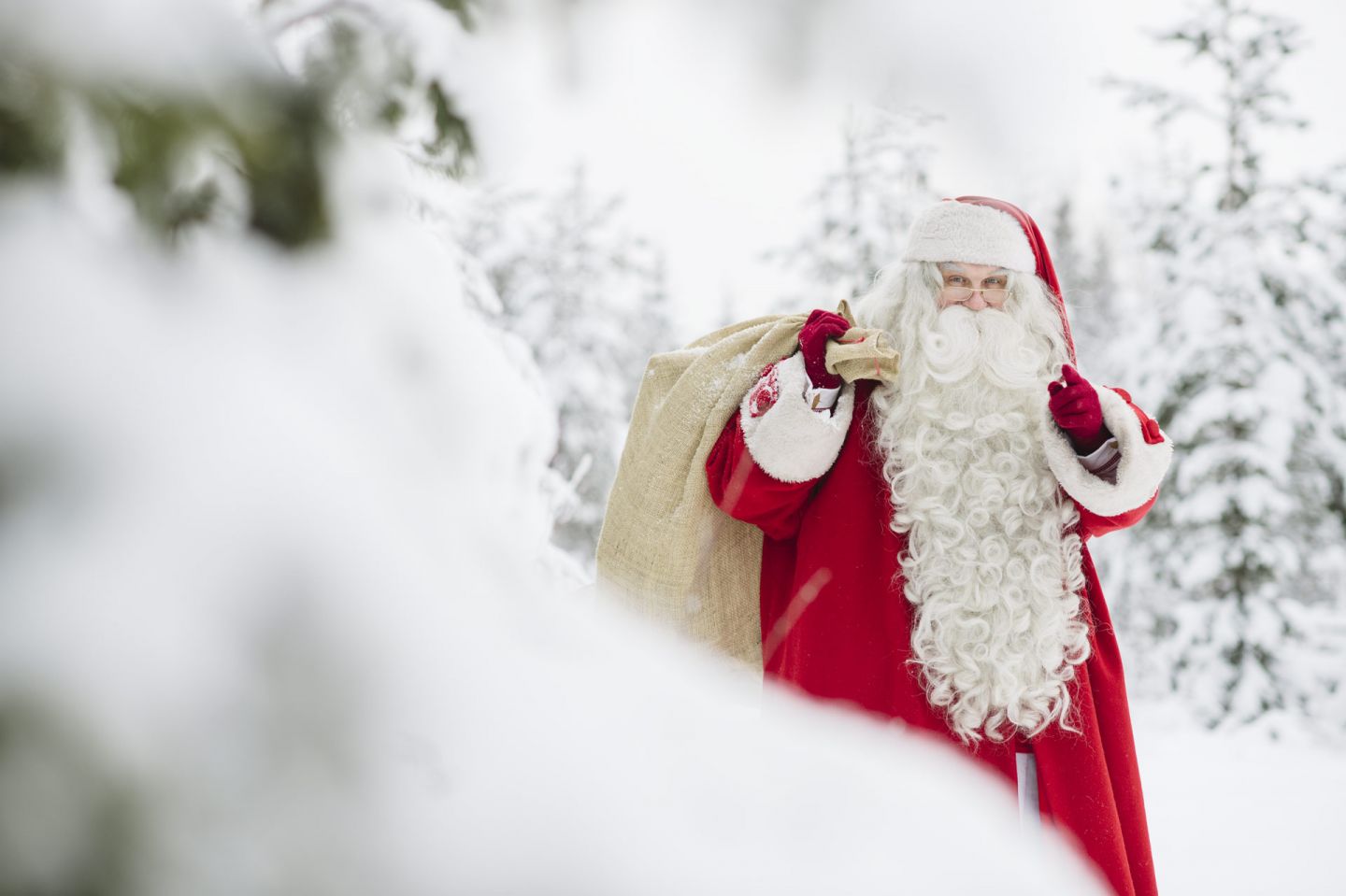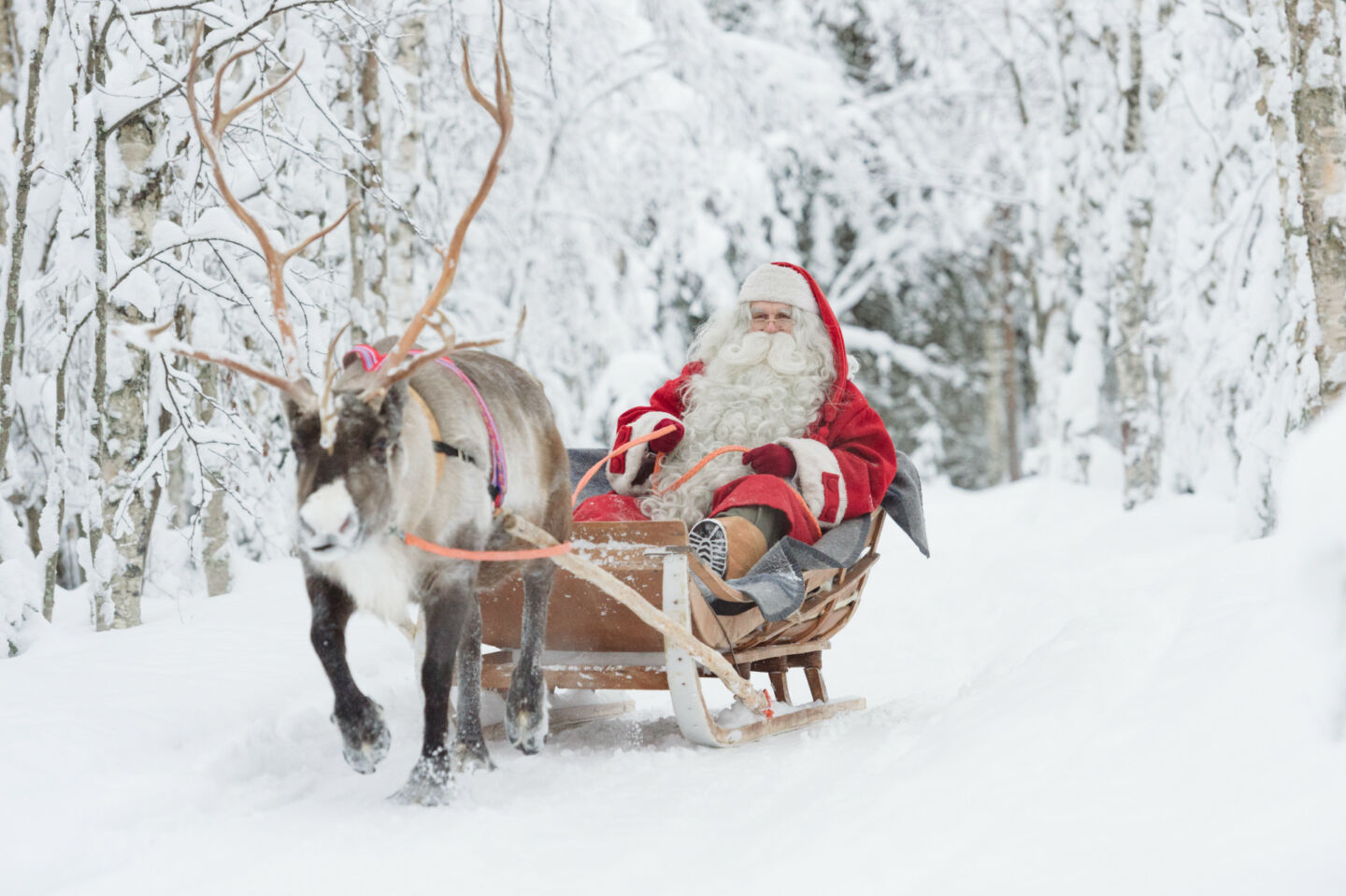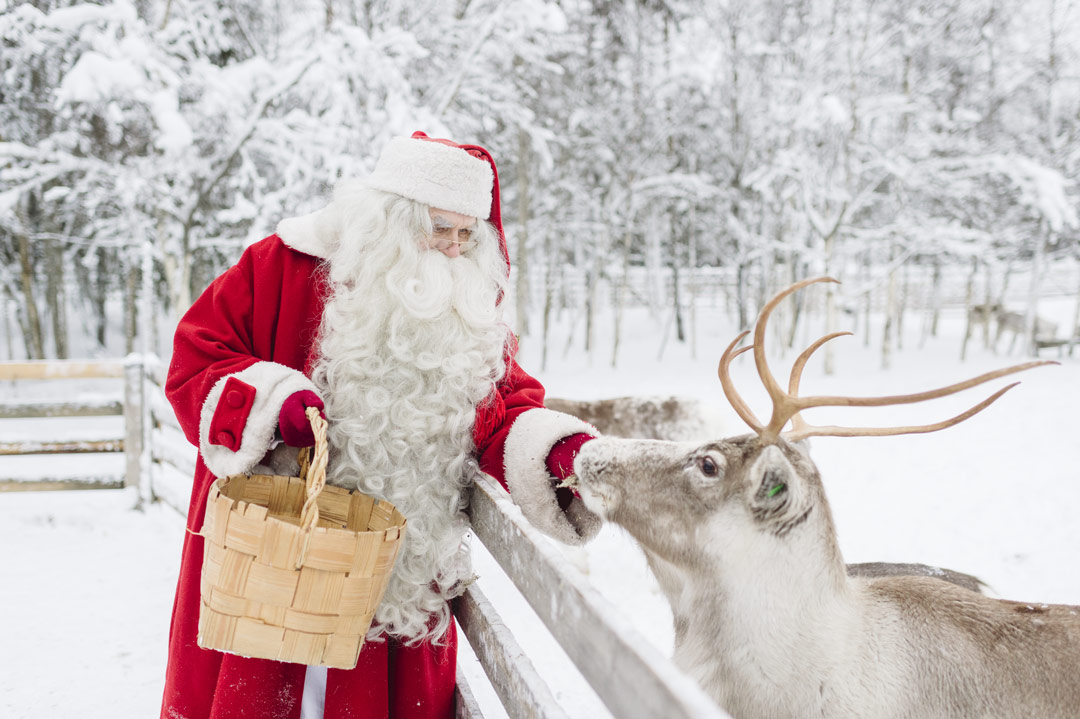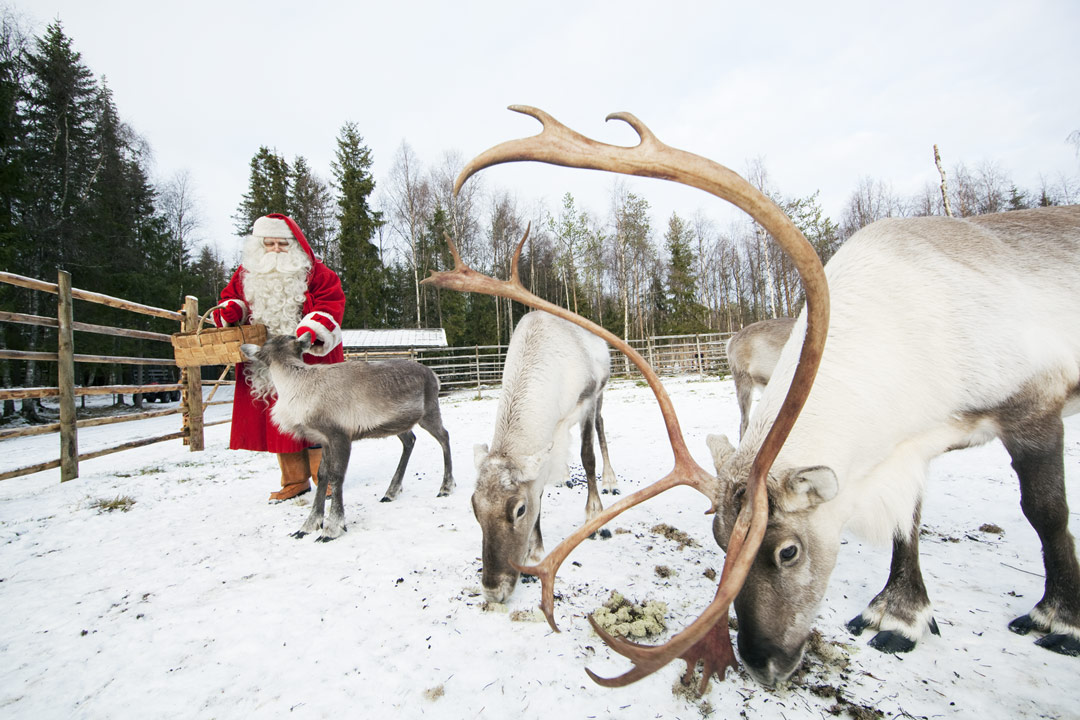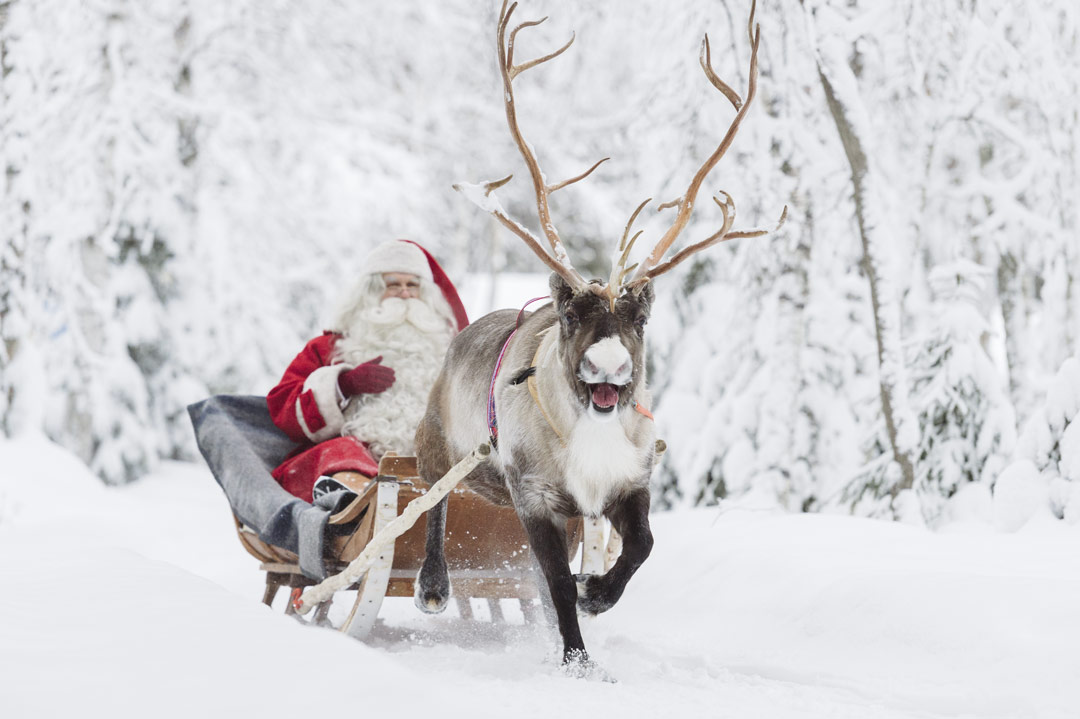Looking for the latest scoop on Santa, his history, home & how you can meet the Big Guy yourself? Here’s all the information you need to know about Big Red & his place in Lapland.
Maybe you’ve heard of him? Big guy, long white beard, has an affinity for the color red? Here you’ll find lots of information on the history of Santa Claus, how the modern version came about, Finnish Christmas traditions, where Santa lays his hat, how you can meet him, his favorite reindeer, how you can send the Big Guy a letter and more!
Who who who is Santa Claus?
Of course, we all know who Santa is, but through repeated tellings and alterations (and cola advertisements), the true story of Father Christmas can get a bit watered down. Ironic, considering the legend of Santa is a distillation of hundreds of stories, including historical figures like Saint Nicholas, myths like Father Christmas, Viejo Pascuero, Sinterklaas, Weihnachtsmann, Joulupukki, Pere Noel, and even Norse gods like Odin. For hundreds of years, these stories and more have been told to children in European and western countries when the days grow short and snowflakes fall like fairy dust over the land.
Many of the modern ideas about Santa Claus came from the famous poem, “’Twas the Night Before Christmas.” Once this poem was published anonymously in a New York newspaper, every child in America (and soon much of the world) knew that Santa visited on Christmas Eve, on a sleigh pulled by flying reindeer, magicked himself up and down chimneys, and carried a sack full of all the gifts for all the children in the world.
With all this talk of stories, legends and gods, you might beg the question: is Santa Claus real? Perhaps no one has ever answered this question better than the New York Sun in 1897, in an editorial addressed to an 8-year-old girl named Virginia.
Where does Santa Claus live?
If you grew up in America, you probably think Santa lives at the North Pole. But he’s not a polar bear, and besides … the North Pole is in the middle of an ocean! Unless Santa lives on a houseboat, he probably doesn’t live on an ocean. Across the Atlantic, though, everyone knows exactly where Father Christmas lives … Finnish Lapland!
For hundreds of years, Santa was content to keep himself and his work in Lapland a secret, but children and friends of Christmas all over the world wouldn’t let him. The son of Finnish and Swedish emigrants, Haddon Sundblom, painted Santa Claus in all his cola-loving glory in magazine advertisements in the 20th century. Eventually, the fervor reached such a pitch that the First Lady of the United States Eleanor Roosevelt came to Lapland to see Santa in person. Not wanting to give away his secret workshop under Korvatunturi Mountain in Savukoski, Santa chose the Arctic Circle for his official office and met the First Lady there in 1950.
Santa and his reindeer
Separating Santa Claus from his reindeer is like taking painted eggs away from the Easter Bunny, or candy away from Halloween. Ever since the poem, “’Twas the Night Before Christmas,” flying reindeer have been Santa’s preferred method of travel. Santa stumbled on the secret magical recipe for flight at an early age, and he experimented for many years to find the right animals to pull his sleigh. He tried horses, but they have a fear of heights. Husky dogs, which carry Santa speeding across the snow, get so excited by flying that it’s nearly impossible to bring them down again. Eventually, Santa discovered the best animal for magical flights around the world: wolverines.
Just kidding, it’s reindeer, of course. Unlike his fictional counterpart, though, Santa has many more than 9 reindeer. With over 200,000 in Finnish Lapland, he has his pick of the smartest and heartiest reindeer. It’s not uncommon to see him considering and cheering on the fastest reindeer at annual reindeer races across Lapland.
If Santa’s reindeer aren’t the storied Dasher, Dancer and friends, then what are their names? Well, reindeer are just like people—they all have their own names. Sometimes they’re called Valko, which means white in Finnish, or they’re named Salama (lightning in Finnish). They have as many names as we do.
How to write a letter to Santa Claus
Writing a letter to Santa is almost as old a tradition as the jolly old elf himself. At Santa Claus Village, there’s a post office named after Big Red, and sending your letters here is the best way to give your greetings, wishes and Christmas cheer to Father Christmas.
Here’s the address:
Santa Claus
Santa Claus’ Main Post Office
Tähtikuja 1
96930 Arctic Circle
Finland
For more info on sending letters to Santa, what happens after, and even how you can get a letter back from the Big Guy, check out our article on How to Write a Letter to Santa.
Santa Claus & Christmas Traditions
There are as many traditions associated with Santa as there are stories about him! Perhaps the most well-known tradition is writing a letter to Santa. Children all over the world send their wishlists, Christmas greetings and questions to Santa. In fact, the Santa Claus Main Post Office receives hundreds of thousands of letters every year!
Santa is also known for having a list and checking it twice. This endless scroll of names places every child in the world in one of two columns: naughty or nice. Luckily for us, Santa is pretty forgiving when it comes to naughtiness. After all, he was once an ornery young elf himself.
In America, the UK, Italy and other countries, Santa visits in the night between Christmas Eve and Christmas morning. But in Finland and many other European countries, the presents are waiting for the children on the morning of Christmas Eve.
In Finland, children call Santa Claus on Christmas Eve morning. And now, you can talk to Santa directly too, from all over the world. Check out the Santa Hotline to see if your country and language are available.
Every year, Santa leaves from Santa Claus Village on his journey—first to his secret workshop to get the gifts, and then onward to the rest of the world to deliver Christmas cheer. You can always watch Santa begin his travels from Santa Claus Village. And Google gets in on the fun with their annual Santa Tracker, which is full of fun every December.
Santa Claus F.A.Q.
Anyone who has spent any time at all talking about Santa with a six-year-old will know the fixed stare and the barrage of questions that comes from a tiny mind trying to grapple with the cosmic magic that is Father Christmas. So we’ve put together a handy list of answers that may help you during your next encounter.



